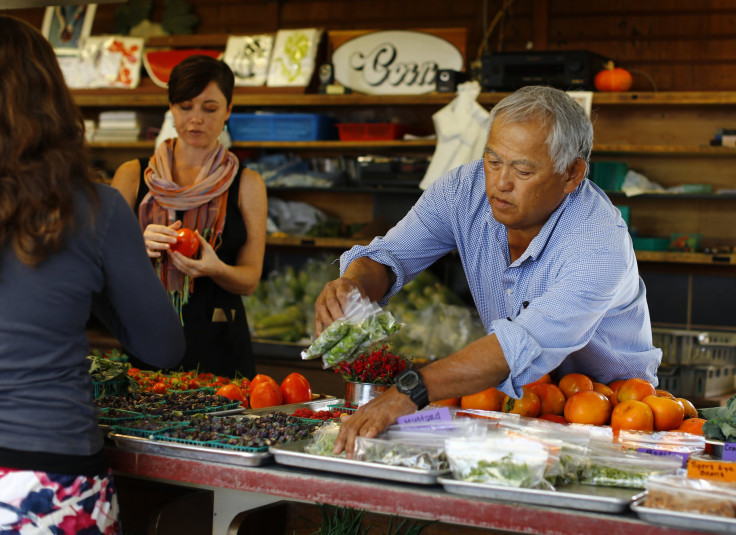Farmers Markets, Which Doubled Over The Past Decade, Are Where Civic-Minded People Work Against Globalization

Why is it that an increasing number of people are shopping at farmers markets and joining food co-ops? Surprisingly, it’s not taste, freshness, or the price of the groceries. Instead, people who eat meats and produce grown locally — "locavores" — enjoy knowing the farmers behind their food, a new study from University of Iowa suggests. This commitment to the local food movement also makes people feel like they are part of a greater community united in a shared passion for a healthy lifestyle and a sustainable environment.
The local food market is what Dr. Ion Vasi, co-author of the study and an associate professor in both the department of sociology and Tippie College of Business at UI, calls a “moralized market,” one in which people combine economic activities with their social values. A trip to the farmers market serves as an act of civic responsibilty for many. Essentially, the community markets are meet-your-neighbor-day and a demonstration of anti-globalization attitudes rolled into one.
The 'Moralized Market'
Over the past decade, the number of farmers markets listed by the U.S. Department of Agriculture (USDA) more than doubled, increasing from 3,706 to 8,268 in 2014. These homegrown markets have captured the public’s imagination in other ways as well. The number of Internet searches for these markets have nearly tripled, while newspaper articles mentioning them have almost quadrupled.
Meanwhile the National Restaurant Associations’ Chef Survey of 2014 finds four of the top 10 trends involve local foods movements: locally sourced meats and seafood ranked as the number one trend, followed by locally grown produce. Restaurant gardens came out in sixth place while farm or estate-branded items entered the list in tenth place. Locally grown food is both trendy and increasingly available. Where and how exactly did this movement catch on?
To answer this, Vasi and his colleagues examined the development of local food markets in in cities across the nation. Having obtained detailed data from the USDA and other sources for the years 2011 through 2014, the team also conducted 40 interviews with consumers and producers in markets in Iowa and New York to learn more about farmers markets, food coops, community-supported agriculture (CSA) providers, and local food restaurants. Finally, they modeled and analyzed the information.
Local food markets are more likely to develop in areas where residents had a strong commitment to civic participation, health, and the environment, the researchers discovered. Many of those who participate in local food systems, whether as a producer or consumer, see themselves as civically engaged citizens who are deeply connected to their communities. According to the study, the two forces that reignited "buy local" campaigns during the 1990s were globalization and encroaching big-box stores.
To gain control of their own economies, communities across the country encouraged supporting an investment in locally owned businesses instead of outside companies. Ultimately, the local food movement is really about cultivating relationships with those nearest and dearest: our neighbors.
Source: Vasi IB, Rynes S, Li C, Nielsen J. Resurgence of the Locavore: The Growth of Multi-Motive Local Foods Markets in the United States. American Sociology Association Annual Meeting. 2015.



























